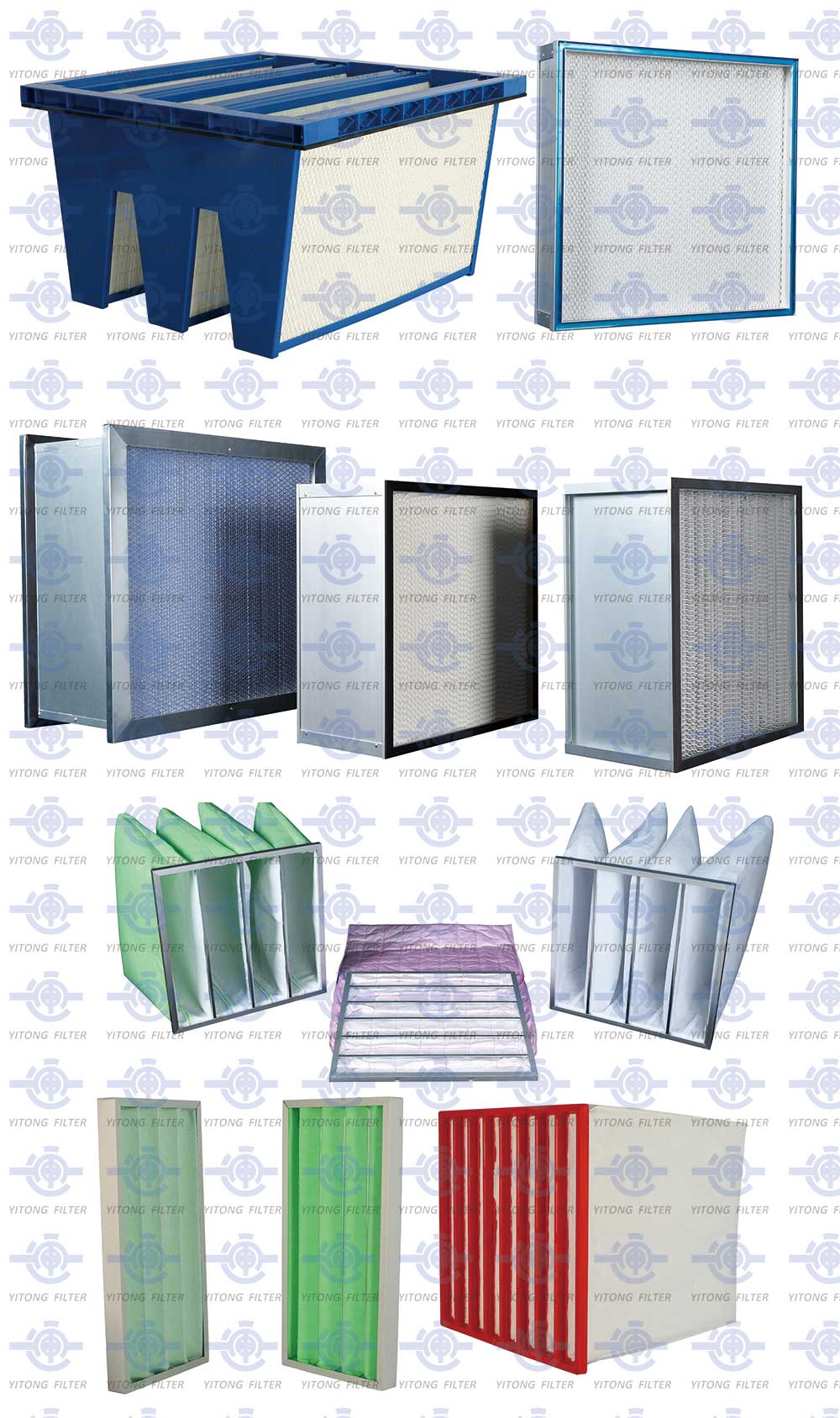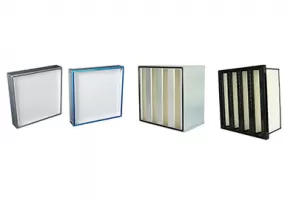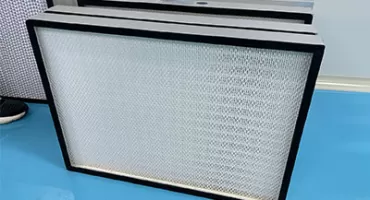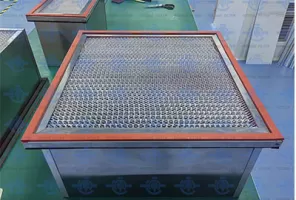 October 09, 2025
October 09, 2025
Air quality has become one of the most important environmental and health concerns of our time. Whether you are at home, in an office, or inside an industrial facility, the air you breathe can significantly affect your health, comfort, and productivity. One of the key components that ensure clean and fresh indoor air is the ventilation air filter.

Ventilation air filters play a vital role in removing dust, allergens, microorganisms, and other airborne particles from the air that flows through ventilation and HVAC systems. They help maintain good indoor air quality (IAQ), protect equipment, and ensure energy-efficient operation.
In this article, we will explore everything you need to know about ventilation air filters — what they are, how they work, their different types, applications, and how to choose the right one for your needs.
A ventilation air filter is a device designed to remove unwanted particles and contaminants from the air before it enters a building’s interior or ventilation ducts. These filters are typically installed in HVAC systems, air handling units (AHUs), or air intake systems.
The main function of a ventilation air filter is to:
Improve indoor air quality
Protect people’s health
Extend the lifespan of HVAC systems
Maintain energy efficiency
Common contaminants captured by ventilation air filters include:
Dust, dirt, and soot
Pollen and plant spores
Mold and bacteria
Pet dander and fibers
Industrial smoke and chemical aerosols
By keeping these particles out of the indoor environment, ventilation filters help ensure a healthier and cleaner atmosphere for occupants.
The working principle of ventilation air filters is based on airflow through a porous filter medium. As the air passes through, airborne particles are captured by various physical and electrostatic mechanisms.
Here are the four main filtration mechanisms:
1. Interception:
When particles come close to the filter fibers, they stick to the surface through contact.
2. Inertial Impaction:
Larger particles moving at higher speeds cannot follow the air stream’s curve and collide directly with the fibers.
3. Diffusion:
Very fine particles (smaller than 0.1 micron) move randomly due to Brownian motion and eventually hit the fibers.
4. Electrostatic Attraction:
Some filters use charged fibers to attract and hold oppositely charged particles.
The effectiveness of a filter depends on factors such as:
The type of filter media (fiberglass, synthetic fiber, activated carbon, etc.)
Air velocity and pressure drop
Particle size distribution
Filter depth and pleat design
Different applications require different types of filters. Below are the most common types used in modern ventilation systems.
3.1 Panel Filters
Basic flat filters made of fiberglass or synthetic media.
Often used as pre-filters to capture large dust and debris.
Inexpensive and easy to replace.
Common in residential and commercial air handling units.
Typical efficiency: MERV 4–8
Applications: Homes, offices, light commercial buildings.
3.2 Pleated Filters
Feature a folded or pleated design, increasing the surface area.
Capture smaller particles such as pollen and fine dust.
Offer higher efficiency and longer lifespan compared to flat panel filters.
Typical efficiency: MERV 8–13
Applications: Offices, schools, hospitals, and retail spaces.
3.3 Bag or Pocket Filters
Designed with multiple extended bags or pockets to increase dust-holding capacity.
Provide medium to high filtration efficiency.
Suitable for systems with high airflow rates.
Typical efficiency: ISO ePM1 60–85% (equivalent to MERV 11–15)
Applications: Industrial facilities, hospitals, large HVAC systems.
3.4 HEPA Filters (High-Efficiency Particulate Air)
Remove 99.97% of particles as small as 0.3 microns.
Made of dense microfibers that trap bacteria, viruses, and ultra-fine dust.
Used in critical environments where air purity is crucial.
Applications: Hospitals, laboratories, cleanrooms, semiconductor plants.
Contain activated carbon granules that absorb odors, gases, and chemical fumes.
Often combined with particulate filters for comprehensive air cleaning.
Applications: Chemical plants, kitchens, airports, laboratories.
3.6 Metal Mesh or Washable Filters
Constructed from aluminum or stainless-steel mesh.
Reusable and easy to clean.
Best suited for environments with heavy dust or oil mist.
Applications: Industrial ventilation, commercial kitchens, air compressors.
4.1 Protect Human Health
Poor indoor air quality can lead to headaches, allergies, asthma, and long-term respiratory illnesses. Ventilation filters prevent harmful particles and microorganisms from circulating in indoor air, protecting both employees and residents.
4.2 Enhance HVAC System Performance
A clogged or dirty air filter restricts airflow and forces the HVAC system to work harder. Clean filters ensure smooth airflow, reduce energy consumption, and help maintain system efficiency.
4.3 Extend Equipment Lifespan
Dust buildup on fans, coils, and ducts can damage HVAC components. Proper filtration reduces maintenance costs and extends equipment life.
4.4 Ensure Compliance with Air Quality Standards
Many industries must comply with specific standards such as:
ISO 16890 (International Filtration Standard)
EN 779 (European Filter Classification)
ASHRAE 52.2 (U.S. HVAC Filter Efficiency Standard)
Using high-quality ventilation air filters helps meet these requirements.
4.5 Improve Comfort and Productivity
Clean air improves comfort, reduces odor, and enhances focus and productivity — particularly important in workplaces and schools.
Ventilation air filters are used in a wide range of environments, including:
| Application Area | Purpose |
|---|---|
| Residential homes | Remove dust and allergens for cleaner indoor air. |
| Commercial buildings | Maintain comfort and meet IAQ standards. |
| Hospitals and healthcare facilities | Prevent infection and contamination. |
| Manufacturing and processing plants | Protect equipment and ensure product quality. |
| Cleanrooms and labs | Maintain ultra-clean conditions. |
| Food and beverage industry | Prevent cross-contamination and odor issues. |
| Public buildings and schools | Provide a healthy environment for visitors and students. |
When choosing a ventilation air filter, consider the following factors:
1. Filtration Efficiency (MERV / ISO 16890):
For homes: MERV 8–11
For offices: MERV 11–13
For hospitals or cleanrooms: MERV 14–HEPA
2. Airflow and Pressure Drop:
The filter should allow enough airflow while maintaining good filtration efficiency.
3. Operating Environment:
Identify the type of contaminants (dust, fumes, oil mist, etc.) and select the appropriate filter media.
4. Maintenance and Replacement Frequency:
Disposable filters require regular replacement; washable filters need cleaning schedules.
5. Cost vs. Performance:
A high-efficiency filter may cost more initially but saves money by reducing energy and maintenance costs.
Proper maintenance ensures your ventilation filters work efficiently and last longer.
Inspect filters monthly for dust buildup.
Replace filters every 3–6 months, depending on use.
Keep ducts and coils clean to prevent recontamination.
Ensure proper sealing around the filter frame to avoid air bypass.
Document maintenance for compliance and performance tracking.
The air filtration industry continues to evolve to meet modern challenges such as urban pollution, pandemics, and sustainability goals. Key innovations include:
Smart Filters
Equipped with sensors that monitor filter condition and air quality in real time.
Send alerts when replacement is needed.
Nanofiber Technology
Uses ultra-fine fibers to capture microscopic particles with low airflow resistance.
Increases filtration efficiency without raising energy costs.
Eco-Friendly Materials
Filters made from biodegradable or recyclable materials reduce environmental impact.
Hybrid Filters
Combine particulate and chemical filtration in one unit, offering complete air purification.
These advancements are driving the next generation of ventilation air filters that are smarter, cleaner, and more energy-efficient.
Ventilation air filters are not just optional accessories — they are essential components for maintaining healthy indoor environments. Whether used in homes, offices, or industrial facilities, they provide critical protection against airborne pollutants and support the efficient performance of HVAC systems.
Choosing the right ventilation air filter helps ensure:
Cleaner and healthier indoor air
Energy savings and system reliability
Compliance with air quality standards
Greater comfort for building occupants
Regular maintenance and proper filter selection can make a significant difference in air quality, operating costs, and overall comfort.
Investing in high-quality ventilation air filters is an investment in health, performance, and sustainability.
 Apr. 21, 2025
HEPA Filters in Hospital Operating Suites: Why They Matter
Apr. 21, 2025
HEPA Filters in Hospital Operating Suites: Why They Matter
 Aug. 31, 2023
Mini Pleat HEPA Filter Ordered by American Customer
Aug. 31, 2023
Mini Pleat HEPA Filter Ordered by American Customer
 Nov. 25, 2024
High-Temperature Resistant Air Filters for Paint Spray Booths
Nov. 25, 2024
High-Temperature Resistant Air Filters for Paint Spray Booths

